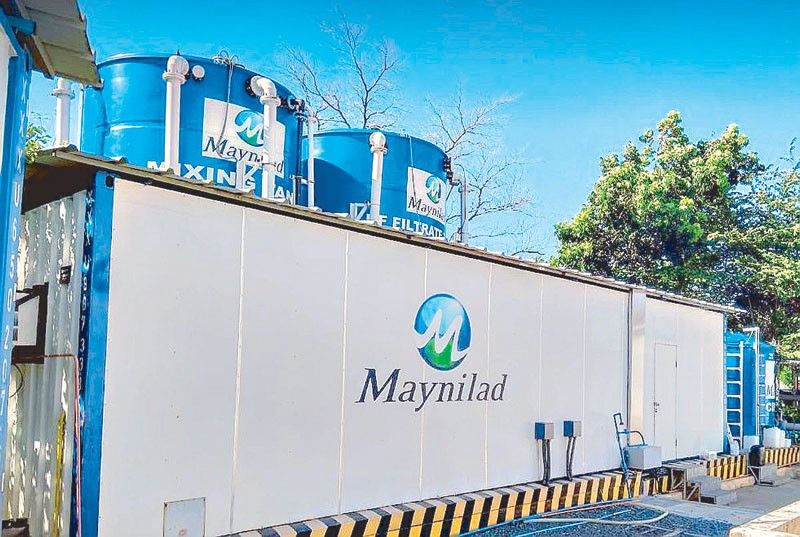Maynilad to address water supply cut

MANILA, Philippines — Six augmentation projects are ongoing to address the impact of the National Water Resources Board (NWRB)’s allocation of 48 cubic meters per second to the two Metro Manila water concessionaires due to Angat Dam’s declining water level.
Aside from the augmentation projects, daily service interruptions have been implemented to “cushion the impact of any supply constraints,” Maynilad said.
“As these supply augmentation projects gradually come on stream over the course of the year, we should be able to generate more water supply for distribution to customers,” Maynilad chief executive officer Ramoncito Fernandez said yesterday.
Daily service interruptions have been isolated to nighttime hours in some areas as additional water supply from the ongoing projects mitigated the drop in water allocation.
The ongoing supply augmentation projects include the reactivation of eight deep wells, four modular treatment plants in Cavite, a new treatment plant in Parañaque City, the Poblacion Water Treatment Plant, cross-border supply through the purchase of treated water from Manila Water and leak repairs and replacement of old pipelines.
The eight deep wells generated at least 5.6 milliliters per day (mld) as of March 2023.
The two modular treatment plants in Imus, Cavite will be operational sometime this year, while the two plants in Bacoor will be operational by late 2024.
The new water treatment plant in Parañaque City can generate five mld.
The Poblacion Water Treatment Plant, the third treatment plant sourcing raw water from Laguna Lake, would generate 50 mld by yearend and 150 mld by early 2024.
Maynilad is also hoping to recover 100 mld by yearend in leak repairs and replacing old pipelines.
“To date, at least 22 mld were generated from several tapping points as there are plans to increase volume purchased with the cooperation of Manila Water,” Fernandez said.
Fernandez also gave assurance that Maynilad will shorten the duration of daily service interruptions. ?At least 591,000 service connections in portions of Caloocan, Malabon, Valenzuela, Navotas, Quezon City and Manila are affected by water interruptions.
Fernandez said Maynilad is working to reduce losses in its distribution system.
“Following major investments in the infrastructure, Maynilad managed to bring down (non-revenue water level in the west zone) to 43 percent by 2022. With its newly approved business plan, Maynilad commits to bring non-revenue water down to the internationally accepted level of 25 percent by 2027,” he said.
Decline
Meanwhile, Angat Dam recorded the highest daily drop in its water level after it decreased to 178.21 meters compared to its previous level of 178.80 meters.
The normal operating level of Angat Dam is 180 meters.
“So far, there is no further reduction in the allocations (for Maynilad and Manila Water). The National Irrigation Administration will likewise continue with the approved allocation,” Metropolitan Waterworks and Sewerage System (MWSS) deputy administrator Jose Dorado Jr. told The STAR in a text message.
Angat Dam supplies more than 90 percent of Metro Manila’s potable water needs and provides for the irrigation needs of 25,000 hectares of farmlands in Bulacan and Pampanga.
The water levels of other dams – Ipo Dam in Bulacan, La Mesa Dam in Quezon City, Ambuklao Dam and Binga Dam in Benguet, Pantabangan Dam in Bulacan, Magat Dam in Isabela and Caliraya Dam in Laguna – also dropped.
Maynilad corporate communications head Jennifer Rufo said at least 80 mobile tankers are ready to provide water supply to Filipinos affected by daily service interruptions.
“We have 80 mobile tankers that we can deploy but as much as possible, we advise our customers to be prepared so that they will not depend on tanker delivery and at the same time, the tankers can be reserved for medical institutions,” she added.
Water Resources Department
Sen. Grace Poe on July 12 reiterated the need to create a Department on Water Resources amid the hours-long service interruptions resulting from Angat Dam’s declining water level and the El Niño phenomenon.
“There are 30 different government agencies governing our water distribution and management, and they are not complementing each other,” Poe said in Filipino at the Kapihan sa Senado forum.
“We’re supposed to be a tropical country and yet we have problems with water supply. The problem is not with water flow in the country – it is a management problem,” she added.
Poe said the MWSS has become “inutile” in its administration of water.
“MWSS should have a contingency plan. We shouldn’t be dancing and praying for rain to happen. As far as I know, MWSS should be the one supposed to be actively looking for new water sources, which they haven’t been doing,” she said.
Poe also urged authorities to come up with modern and long-term solutions instead of “primitive” water rationing at barangays and relying on rainfall.
More dams and water catchments should be constructed and repairs must be done to prevent water leakages, Poe advised.
- Latest
- Trending































